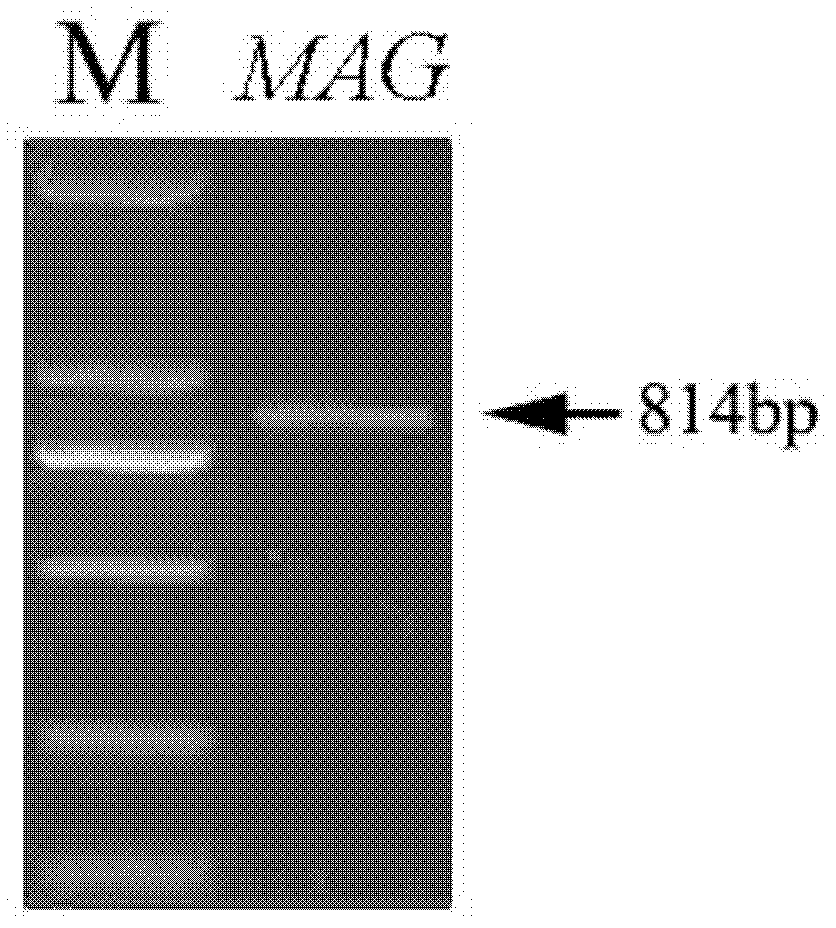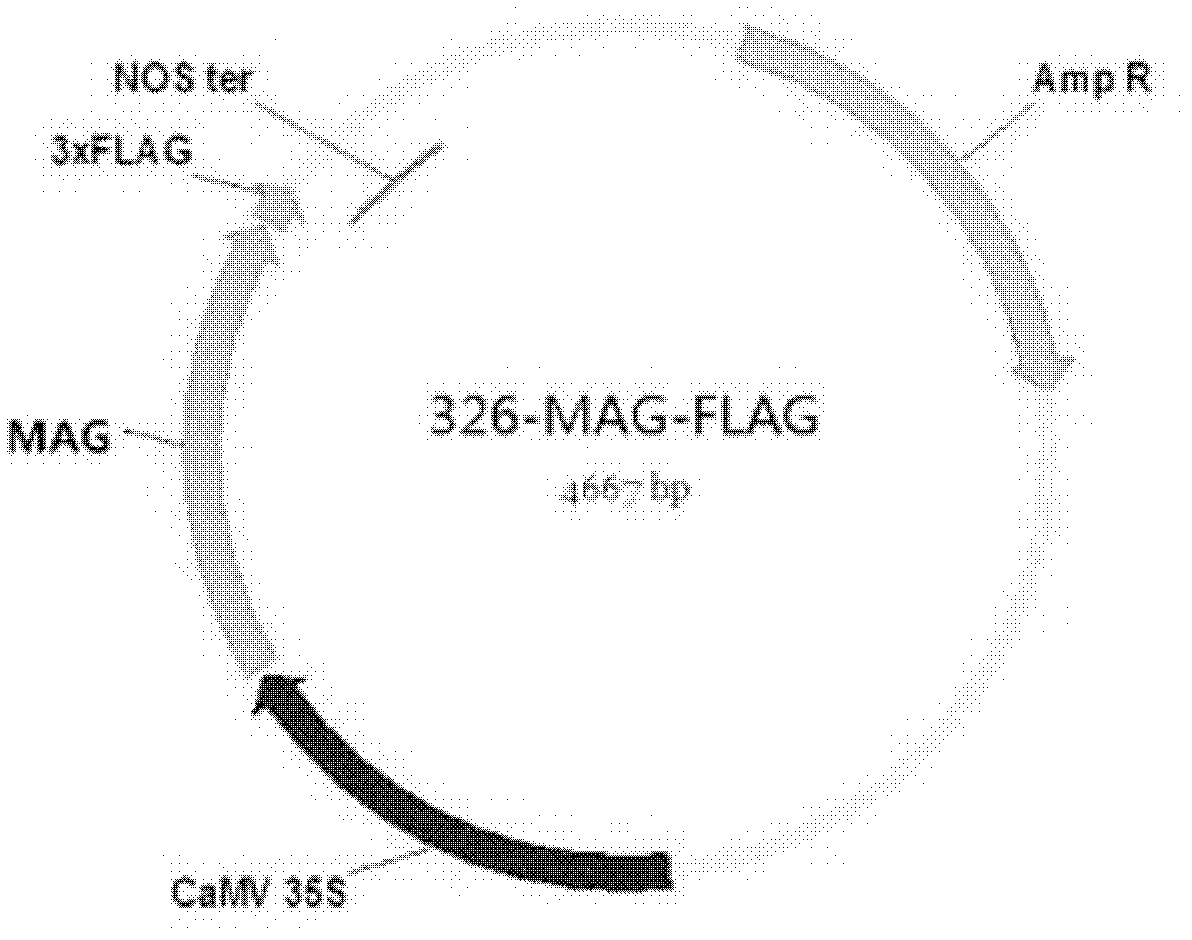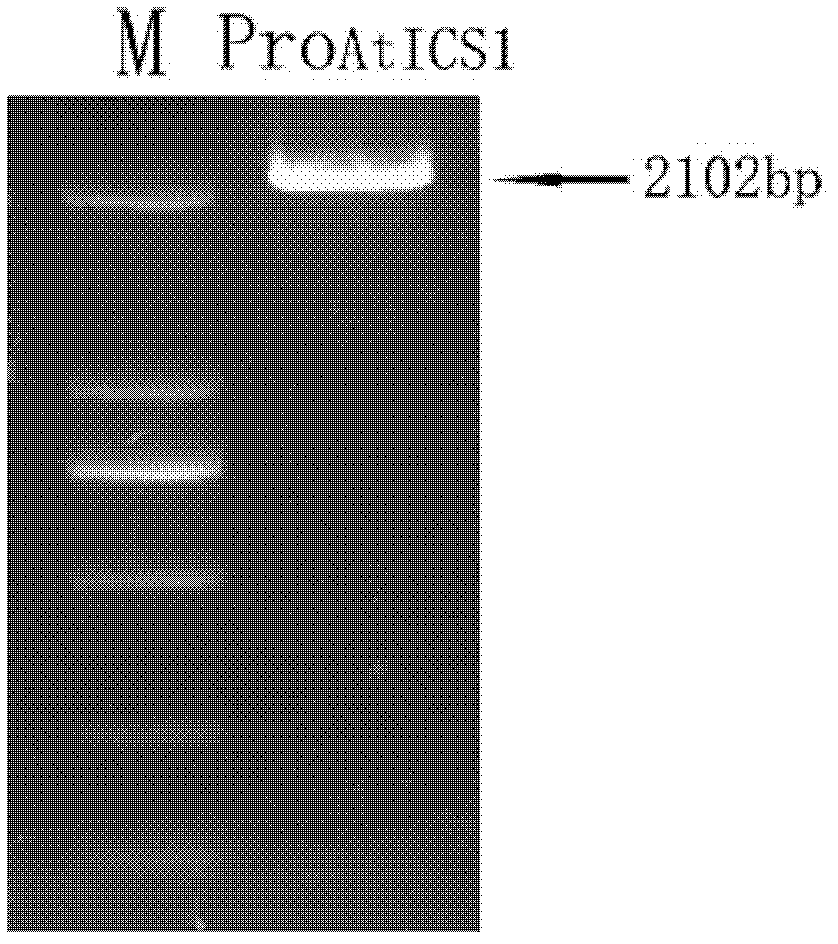Plant resistance related protein MAG, and coding gene and application thereof
A gene and protein technology, applied to plant resistance-related protein MAG and its encoding gene and application field, can solve the problems of increasing salicylic acid, not yet found, not found, etc., to achieve the effect of enhancing disease resistance
- Summary
- Abstract
- Description
- Claims
- Application Information
AI Technical Summary
Problems solved by technology
Method used
Image
Examples
Embodiment 1
[0062] Embodiment 1, the acquisition of MAG protein and its coding gene
[0063] 1. According to the existing NCBI database and literature, set a pair of primers as follows:
[0064] F1 (forward primer): 5'- TCTAGA GTCAACGTCGCATACTTTTGAA-3' (underlined XbaI restriction recognition sequence);
[0065] R1 (reverse primer): 5'- GGATCC CGAGAGGTTTAAGAGGTGTTCTTA-3' (underlined BamHI restriction recognition sequence).
[0066] 2. Genomic DNA was extracted from leaves of Arabidopsis thaliana ecotype Columbia.
[0067] 3. Using genomic DNA as a template, use the primer pair designed in step 1, and perform PCR amplification with PrimeSTAR HS high-fidelity enzyme from TaKaRa Company.
[0068] 4. The PCR amplification product is sequenced, as shown in sequence 2 of the sequence listing.
[0069] The protein shown in Sequence 1 of the Sequence Listing is named MAG protein. The gene encoding the MAG protein is named as the MAG gene, and its genomic DNA is shown in Sequence 2 of the ...
Embodiment 2
[0070] Embodiment 2, the cloning of each gene and the construction of its recombinant expression vector
[0071] 1. Obtaining of MAG gene and construction of recombinant plasmid 326-MAG-FLAG
[0072] 1. Genomic DNA was extracted from leaves of Arabidopsis thaliana ecotype Columbia.
[0073] 2. Using the genomic DNA in step 1 as a template, use the primer pair composed of F1 and R1 to carry out PCR amplification under the action of TaKaRa's PrimeSTAR HS high-fidelity enzyme to obtain PCR amplification products. The agarose gel electrophoresis of the PCR amplification product is shown in figure 1 (M represents a nucleotide marker, which is DL2000 from TaKaRa Company).
[0074] 3. The PCR amplification product of step 2 was double-digested with restriction enzymes XbaI and BamHI, and the digested product was recovered.
[0075] 4. The 326-FLAG expression vector was double digested with restriction enzymes XbaI and BamHI, and the vector backbone of about 3827 bp was recovered.
...
Embodiment 3
[0097] Embodiment 3, the application of MAG gene in inducing ICS1 gene promoter (ProAtICS1) to start gene expression
[0098] 1. Transient expression of recombinant plasmids in Arabidopsis leaf protoplasts
[0099] The recombinant plasmid 326-MAG-FLAG and recombinant plasmid 326-Pro constructed in Example 2 AtICS1 ::GFP co-transformed Arabidopsis protoplasts (recombinant plasmid 326-T 7 -FLC is used as a negative control of the recombinant plasmid 326-MAG-FLAG; the 326-FLAG expression vector is used as another negative control of the recombinant plasmid 326-MAG-FLAG), the specific steps are as follows:
[0100] 1. Germinate Colombian ecotype Arabidopsis seeds on MS medium, transplant them into soil when the roots grow to 1-3 cm, and cultivate them in a greenhouse at 23° C. (12 hours of light per day, light intensity of 150 μE).
[0101] 2. Add 20ml of double distilled water to a 90mm petri dish, then add 1.82g of D-mannitol and dissolve it.
[0102] 3. Take the unbolted lea...
PUM
 Login to View More
Login to View More Abstract
Description
Claims
Application Information
 Login to View More
Login to View More - R&D
- Intellectual Property
- Life Sciences
- Materials
- Tech Scout
- Unparalleled Data Quality
- Higher Quality Content
- 60% Fewer Hallucinations
Browse by: Latest US Patents, China's latest patents, Technical Efficacy Thesaurus, Application Domain, Technology Topic, Popular Technical Reports.
© 2025 PatSnap. All rights reserved.Legal|Privacy policy|Modern Slavery Act Transparency Statement|Sitemap|About US| Contact US: help@patsnap.com



